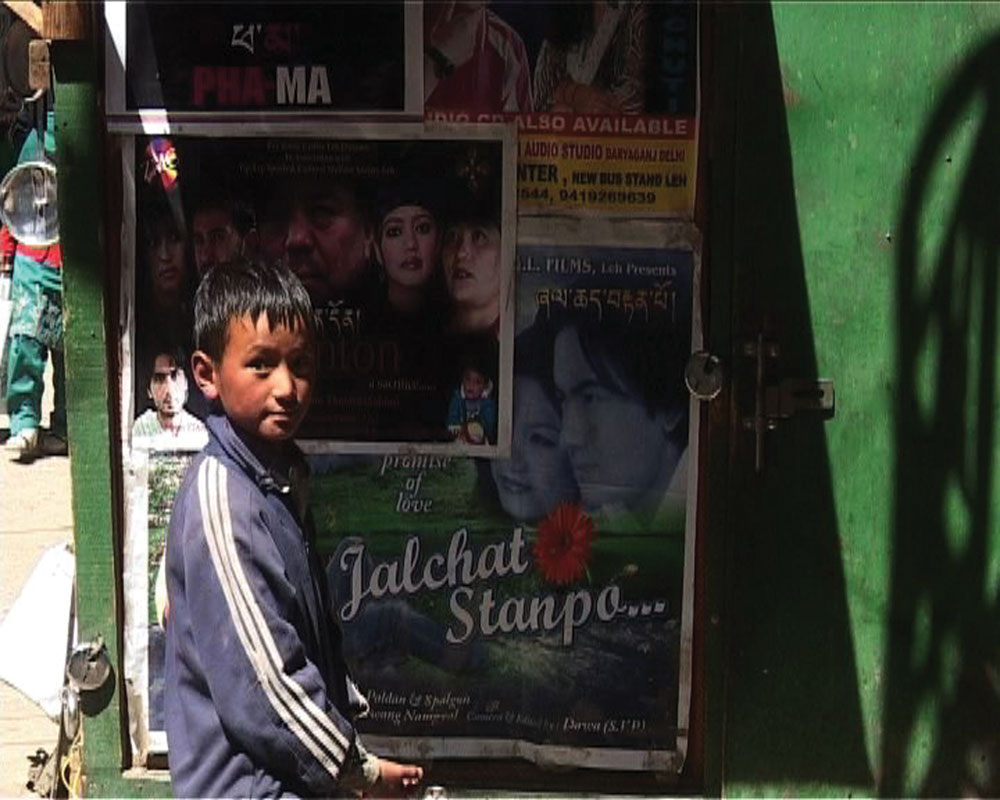Shabani Hassanwalia



Grant Period: Over one year
Four years ago, the first ever Ladakhi film was made for the screen by a local, with Ladakhi actors speaking in Ladakhi. It was the story of a soldier falling in love with a Ladakhi girl. The film was a hit. Now, four years later, each winter sees the release of at least six to seven digital films produced and directed by local grocers, trek-guides and government officials. This grant will support Shabani Hassanwalia to make a documentary on the local Ladakhi cinema and its unique practice of direct-to-video feature filmmaking, with a view towards understanding how cinema as a contemporary cultural practice is steeped in tradition, but also rebels against it. Shabani is keen to explore how cinema was chosen as a form of communication and artistic expression in Ladakh as soon as technology became affordable. The key narrative concerns through almost all of these films are issues arising out of the lack of education, the fear of globalisation, inadequacies of a subsistence agrarian economy, and the entrenched class and caste system. Wrapped in fluff and melodrama, much like Bollywood, these films address notions of belonging and fractured personal and political identities.
Ladakhi culture is of particular interest to Shabani because of the cruel geography and curious vulnerability of people to the elements. She feels that “their local cinema tells a way better story of the various tugs the society feels – of being 'globalised' and/or westernised, of a conflicted, disenchanted youth, which holds on to its roots as tightly as it tears away from them.” According to her it is this inherent cultural tempestuousness that the filmmakers and the audience are attempting to understand and negotiate through cinema. Shabani is also interested in studying the different genres that seem already to be developing in this fledgling industry. Bollywood style love stories or ‘small budget fantasia’ that portray allegiance to the land and people and to being Ladakhi are the most widely viewed. Some films have been attacked with charges of ‘westernisation’ and ‘corruption of moral culture’ and others have been criticised for ‘the dilution of traditional Ladakhi folk style’. This has led to a new strand of cinema––straightforward retellings of folk tales using traditional folk songs and musical instruments. Though these films are not Ladakhi hits, they are promoted as vehicles for cultural tourism.
Besides these two strands, this fledgling industry has just seen the emergence of ‘art house’ cinema. One such recent film was about four friends in search of the meaning of life in the city of Leh. Imaginatively shot and edited by a bunch of amateurs, the film sank without a trace at the box office because it was released in summer at the peak of the tourist season, and nobody turned up to see it. Winter is when film watching really becomes the main activity of the local Ladakhis. If the film is a hit it runs for 2-3 months and if not, it comes off in 10-15 days. A possible narrative structure for Shabani’s documentary involves following an actor who first acts in a film produced by a local grocery store/production house. He then takes one week’s leave from his job in a cab company to make a film with the Ladakh Vision group, a not-for-profit group of five filmmakers who use the profits from their films for work in rural education and health care.
Shabani is also particularly fascinated with how cinema has created ‘artists’, who prior to holding a camera had no such identity. She wishes to explore this in her documentary as well.
